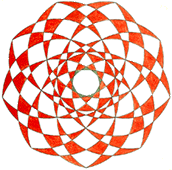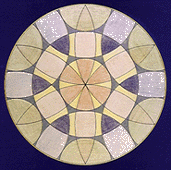|

|
Remo F. Roth
Dr. oec. publ., Ph.D.
dipl. analyt. Psychologe (M.-L. v. Franz)
|

|
Some
Quotations from Wolfgang Pauli's Scientific Letters, including some Comments
With
many thanks to Lore Zeller (LA, CA) for the English translation of the German
original
A
Work in Progress
|
To
Markus Fierz, 1948:
"When one analyzes the pre-conscious step to concepts, one always
finds ideas which consist of 'symbolic images.' The first
step to thinking is a painted vision of these inner
pictures whose origin cannot be reduced only and firstly
to the sensual perception but which are produced by an
'instinct to imagining' and which are re-produced by
different individuals independently, i.e.
collectively... But the archaic image is also the
necessary predisposition and the source of a scientific
attitude. To a total recognition belong also those
images out of which have grown the rational concepts."
|
To
Markus Fierz, 1948:
"What now is the answer to the question as to
the bridge between the perception of the senses and the
concepts, which is now reduced to the question as to the
bridge between the outer perceptions and those inner
image-like representations. It seems to me one has to
postulate a cosmic order of nature -- outside of our
arbitrariness -- to which the outer material objects are
subjected as are the inner images...The organizing and
regulating has to be posited beyond the differentiation
of physical and psychical... I am all for it to call
this 'organizing and regulating' 'archetypes.' It would
then be inadmissible to define these as psychic
contents. Rather, the above-mentioned inner pictures
(dominants of the collective unconscious, see Jung) are
the psychic manifestations of the archetypes, but which
would have to produce and condition all nature laws
belonging to the world of matter. The nature laws of
matter would then be the physical manifestation of the
archetypes".
|
| |
|
[RFR,
02/01/2004:]
In contrast to the materialists and positivists Wolfgang Pauli
states here that it is not only the sensual world -- perceived
by the extraverted sensation after Carl Jung -- that leads to
intellectual concepts, but also the inner images out of the
collective unconscious, observed with the help of the
introverted sensation and intuition. By postulating this
connection he is led to a further conclusion: The existence of an
observable reality beyond the split into inner and outer,
psychic and physical world. He speaks here for the first time of
what he later called the psychophysical reality (and Carl Jung
the unus mundus).
If
this hypothesis is true -- and the empirically observable
synchronicity phenomenon points in this direction --, there must
also be a relationship between the physical and the psychic
manifestation of the archetype. Therefore the question arises:
When the psychic (or psychophysical) manifestation of the
archetype has been changed by inner observation -- a phenomenon similar to
the changing of the material world by physical observation, as
stated by quantum physics -- has also an alteration of the
natural laws taken place, i.e., is it possible that the
observation of the unus mundus by a human individual can
spontaneously change the course of the world? For me,
this seems to be the core question physicists/depth
psychologists of the 21st century will have to answer.
|
To Aniela Jaffé in 1956:
"It
is a specific danger of Jungians to get stuck in trivial
matters with the help of Jung quotes." |
To C.A. Meier (the president of the C.G. Jung Institute)
in 1956:
"The
designation 'Jungian Psychology' is actually already
unscientific sectarianism. I only acknowledge C.G.
Jung's contribution to the general
psychology of the unconscious."
|
|
To Markus Fierz:
"The
road from Jung to the Jungians becomes ever farther,
more abysmal, more impassable - I cannot get anymore from
him to them."
|
To
C.A. Meier in 1950:
"The
fact of the existence of two theories that contradict
each
other in Jung ... corresponds psychologically to the
vascillation between 3 and 4."
RFR:
Pauli addresses with these words the until today
unresolved problem of the logical inconsistency of
Jung's causal theory of the archetypes (f.i. in AION)
and the acausal theory of synchronicity, an extremely
profound problem of depth psychology, which, to be sure,
has not become conscious to the present Jungians because
of their neoplatonic position now more than 50 years
later.
|
|
To Markus Fierz:
"Both
of us [Pauli and Jung] [seem] to agree that the future of Jung's ideas is
not with [psycho-] therapy... but with a unitarian, holistic
concept of nature and the position of man in it."
|
To
Markus Fierz:
It
is always the older that emanates the new one
Sc. Correspondence (in German), vol. 4/I, 1996,
p. 387
|
[RFR,
January 2004:] The
question arises: Is
Wolfgang Pauli, the "conscious of physics", also the
conscious of depth psychology?


|